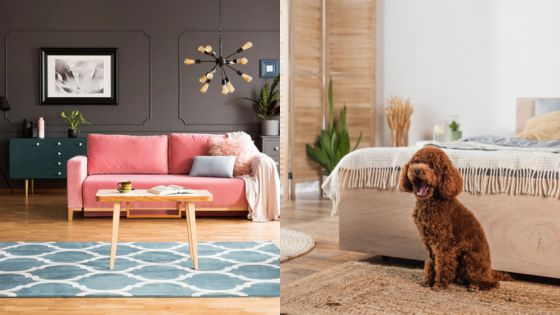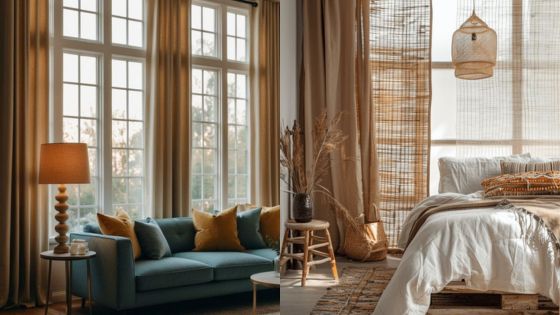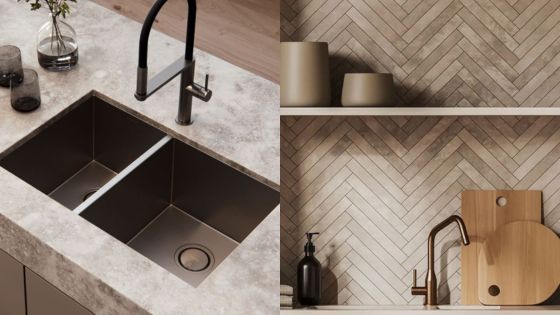Southwestern interior design captures the essence of the American Southwest. It blends vibrant colors, rich textures, and natural materials to create warm and inviting spaces. This style showcases elements like adobe walls, rustic furniture, and accents inspired by Native American art.
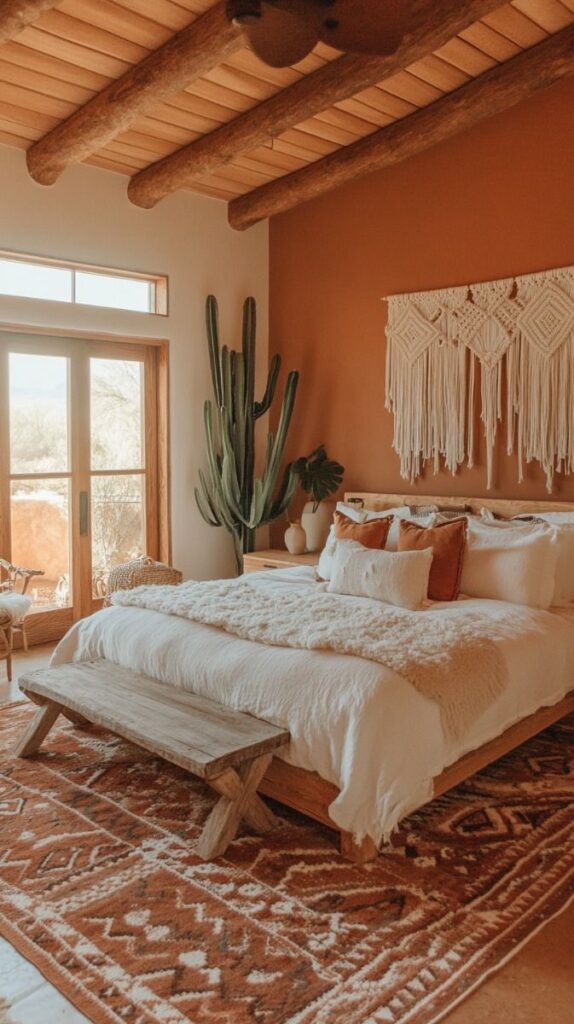
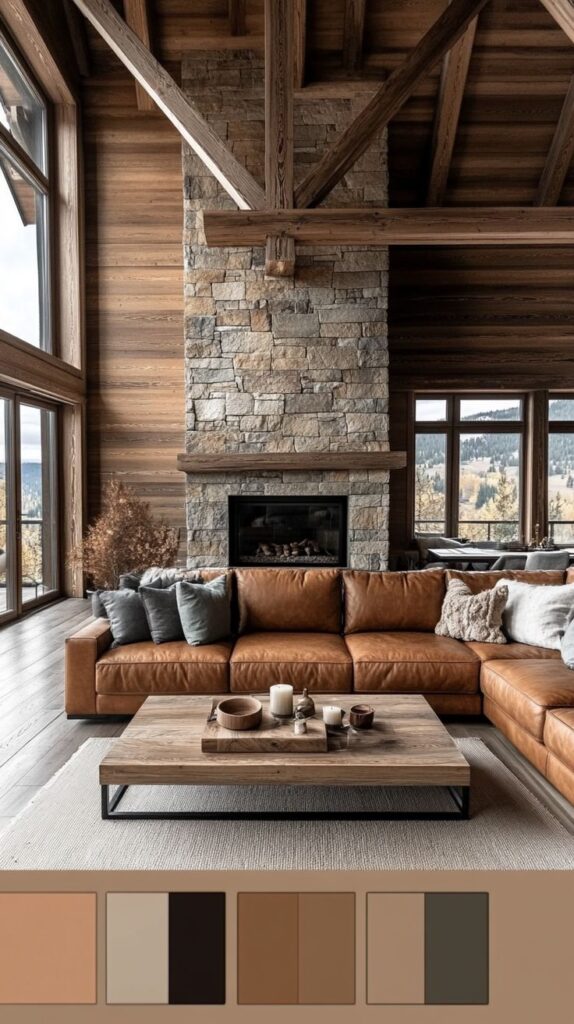
Incorporating Southwestern design means embracing earth tones, bold prints, and handcrafted items. This approach emphasizes comfort and a connection to nature, making homes feel grounded and cozy. The use of natural materials such as wood, stone, and leather adds depth and character to each room.
Those interested in transforming their living spaces will find that Southwestern interior design provides a unique way to celebrate cultural heritage. The style invites creativity by allowing a mix of traditional and modern elements.
Historical Roots of Southwestern Interior Design
Southwestern interior design has deep historical roots. It draws from the rich cultures of Native American tribes and Spanish settlers in the region.
The design combines elements of Adobe architecture and Hispanic influences. Adobe buildings use natural materials like clay and straw. These materials help homes stay cool in hot weather.
Key features of this style include:
- Earthy colors: browns, reds, and sandy tones reflect the landscape.
- Handcrafted items: pottery, textiles, and rugs showcase local artisanship.
- Natural materials: wood, stone, and metal are commonly used.
In the 20th century, designers like Georgia O’Keeffe popularized this style. Their work highlighted the beauty of the Southwestern landscape.
This design style also embraced modern influences in the mid-1900s. People began mixing traditional elements with contemporary design.
Today, Southwestern interior design remains popular. It offers a connection to the past while adapting to modern needs. The blend of cultures creates a unique aesthetic that many appreciate.
Key Elements of Southwestern Style
Southwestern style is known for its warm colors and natural materials. Key elements include a specific color palette, distinctive furniture, and unique decorative accents that reflect the region’s culture and environment.
Color Palette
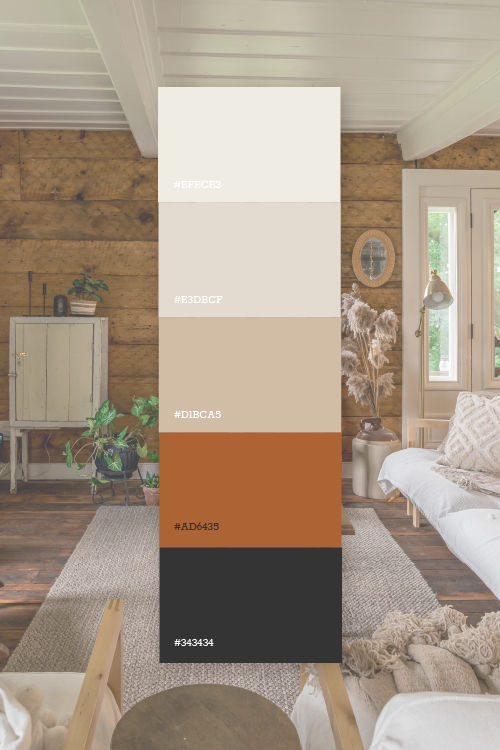
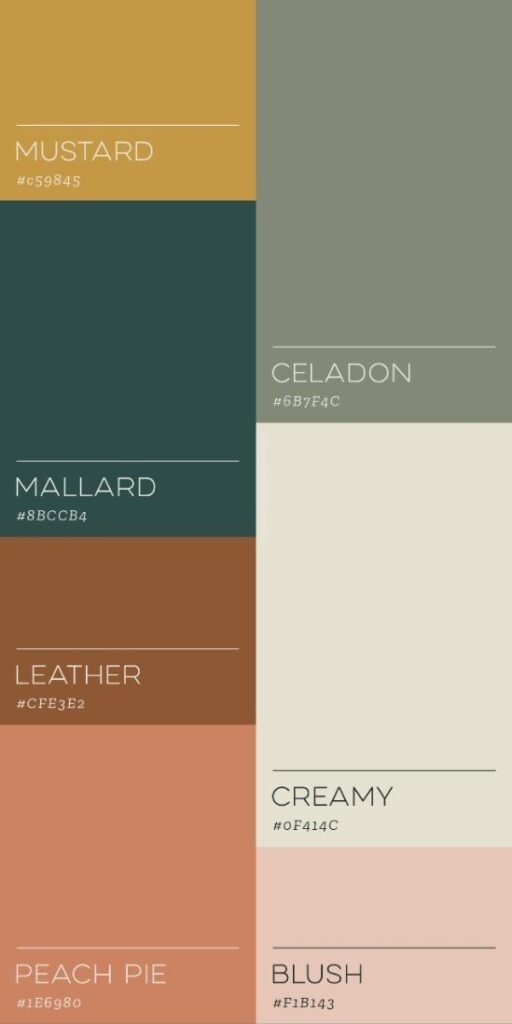
The color palette in Southwestern design draws inspiration from the desert landscape. It features warm earth tones like rust, ochre, and terracotta. These colors mimic the natural hues found in soil, rocks, and sunsets.
Bright accents, such as turquoise and deep red, are often included to add vibrancy. These colors reflect the cultural influences of Native American art and Mexican tiles. A balanced mix of neutral and vibrant hues creates a welcoming atmosphere in homes.
Materials and Textures
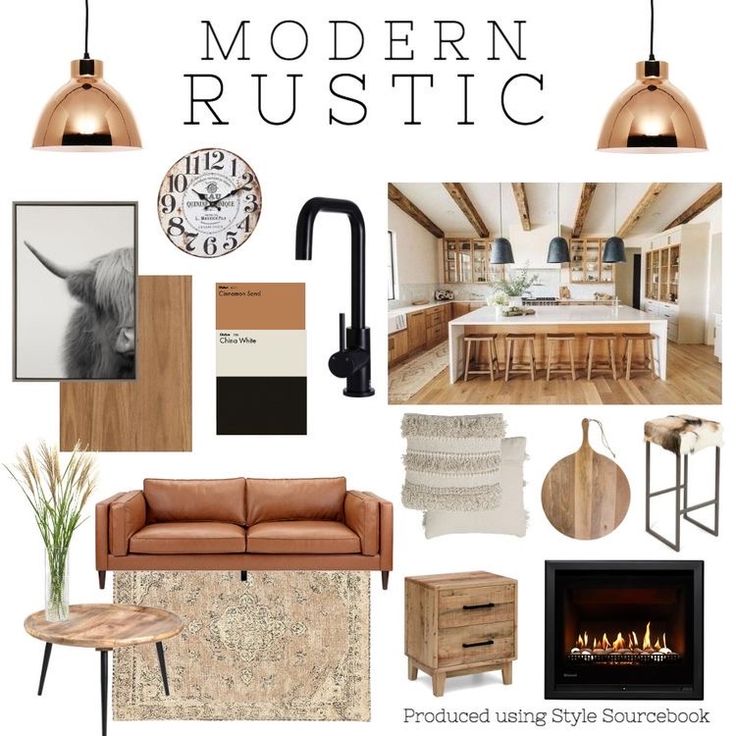
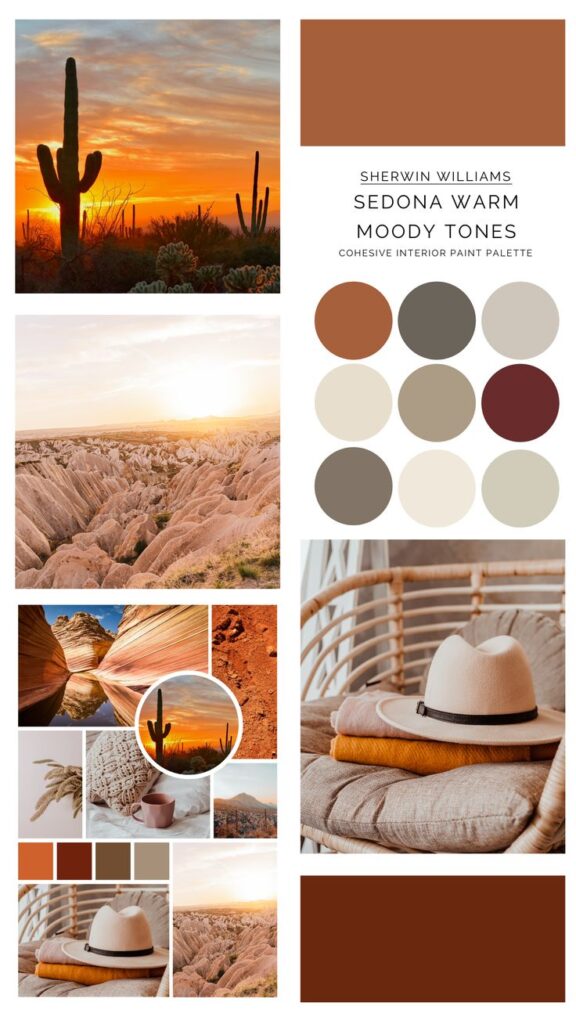
Natural materials play a big role in this design style. Common materials include ** adobe**, wood, and wrought iron.
Adobe provides a traditional feel, while wood adds warmth and texture. It is often used in beams, furniture, and decorative elements. Wrought iron is popular for accents, railings, and light fixtures, adding a touch of elegance.
Textured fabrics are also important. Look for woven textiles, leather, and faux fur in soft furnishings. These materials enhance comfort and invite relaxation while staying true to the Southwest theme.
Furniture
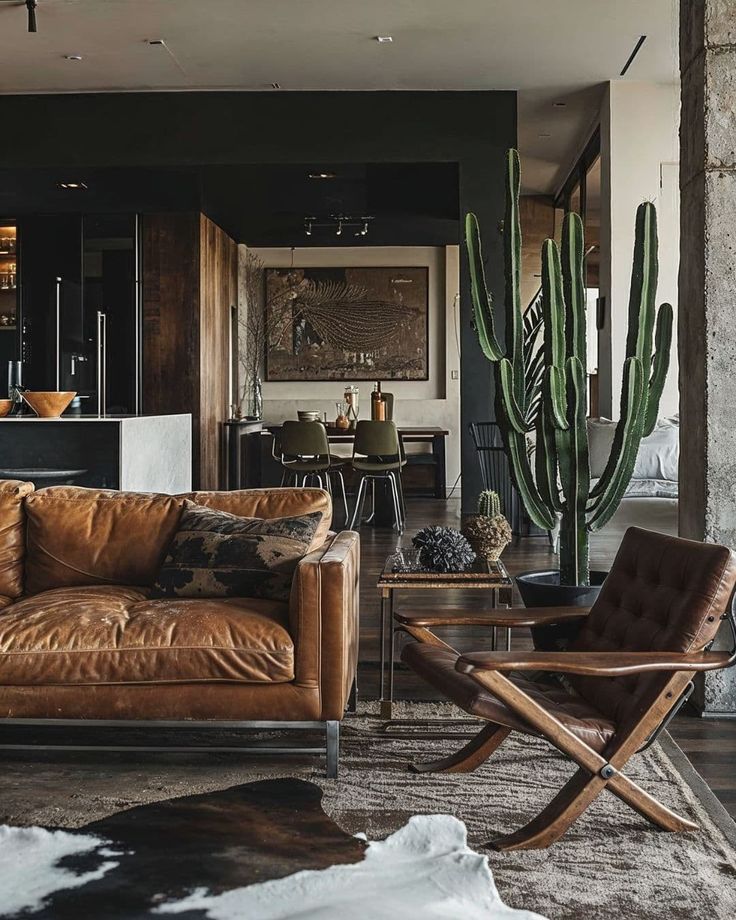
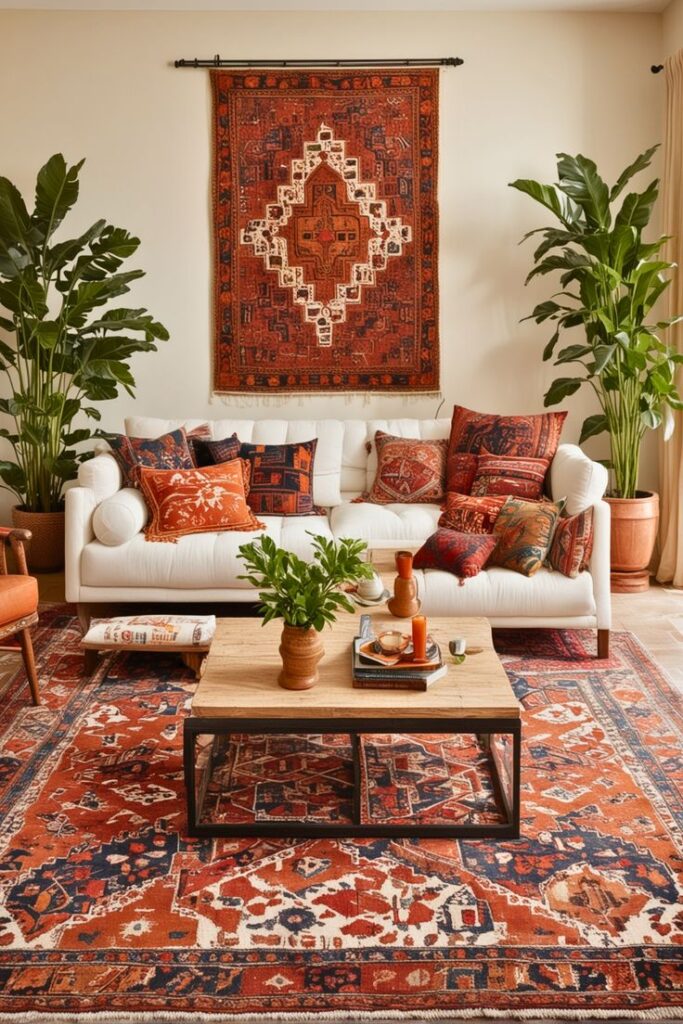
Furniture in Southwestern style combines comfort and ruggedness. Pieces are often made from natural wood and feature simple lines and sturdy construction.
Old-fashioned wood furniture, such as tables and rocking chairs, works well. Many pieces have a distressed finish, giving them a rustic charm.
Upholstered furniture often uses bold patterns inspired by Native American textiles. Deep sofas and oversized chairs invite people to gather and relax in these cozy spaces.
Decorative Accents
Decorative accents bring personality to Southwestern interiors. Common accents include handcrafted items, ceramics, and Native American art.
Handwoven rugs and throw pillows add warmth and color. Art pieces, such as pottery or wall hangings, reflect local culture and history.
Lighting is essential in this style. Use table lamps with stained glass or rustic finishes to enhance the overall atmosphere. Small details help complete the look and showcase individual taste while embracing cultural heritage.
Influence of Native American Culture
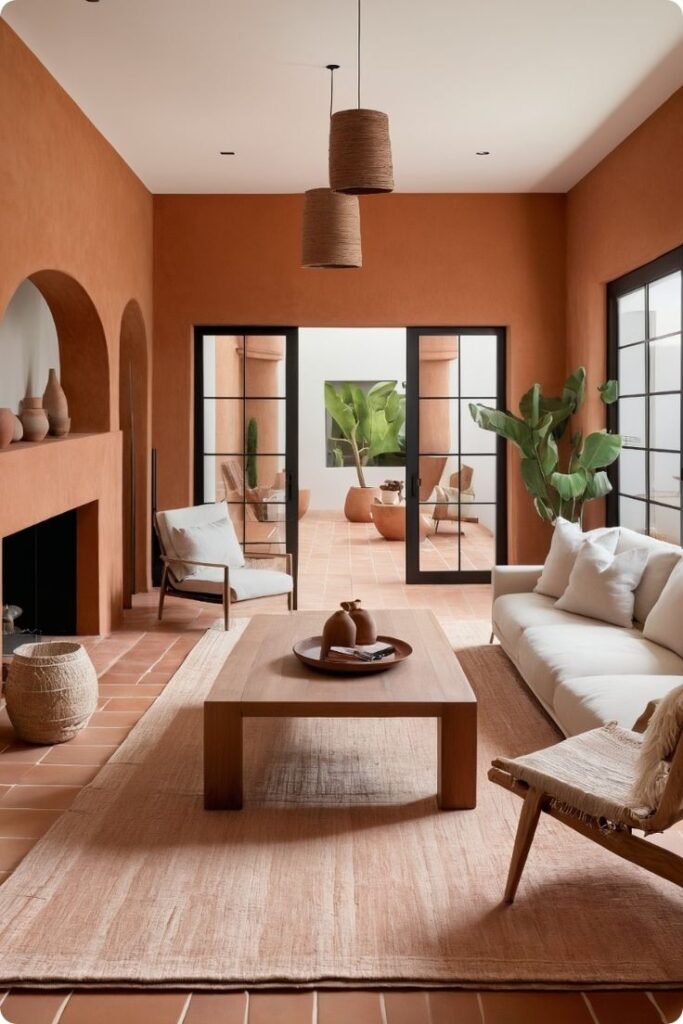
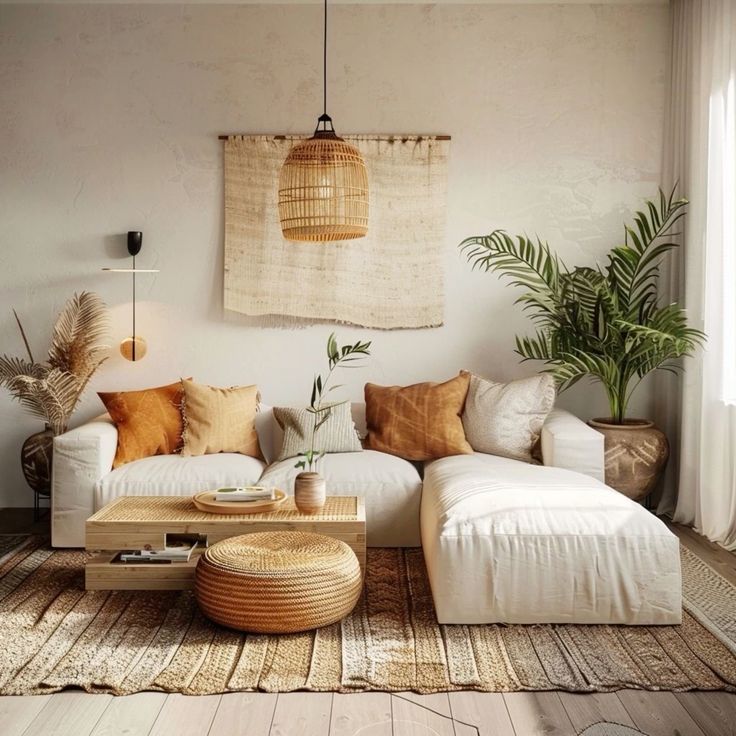
Native American culture plays a significant role in southwestern interior design. The art, symbols, and craftsmanship from various tribes influence the colors, materials, and overall aesthetic of the spaces.
Art and Symbols
Art in southwestern design reflects the deep connection Native Americans have with nature. Common themes include animals, plants, and celestial elements.
Symbolic patterns often represent cultural stories or historical events. These symbols may appear in textiles, pottery, and wall art. Bright colors like turquoise, red, and yellow are widely used to embody the spirit of the region. Navajo rugs, for instance, feature unique geometric designs that tell stories of the land and its people.
Incorporating these artistic elements brings authenticity and character to southwestern interiors.
Craftsmanship
Craftsmanship is key in creating southwestern design elements. Many Native American artisans use traditional techniques passed down through generations.
Pottery, for instance, often features hand-painted designs and is built using coil methods. This gives each piece a unique appeal.
Woodworking also plays a vital role. Hand-carved furniture and decor showcase intricate designs that highlight the natural beauty of the wood.
These handcrafted items are not just functional but also tell stories. They contribute to a rich, cultural narrative that enhances the aesthetic of southwestern spaces.
Incorporating Natural Elements
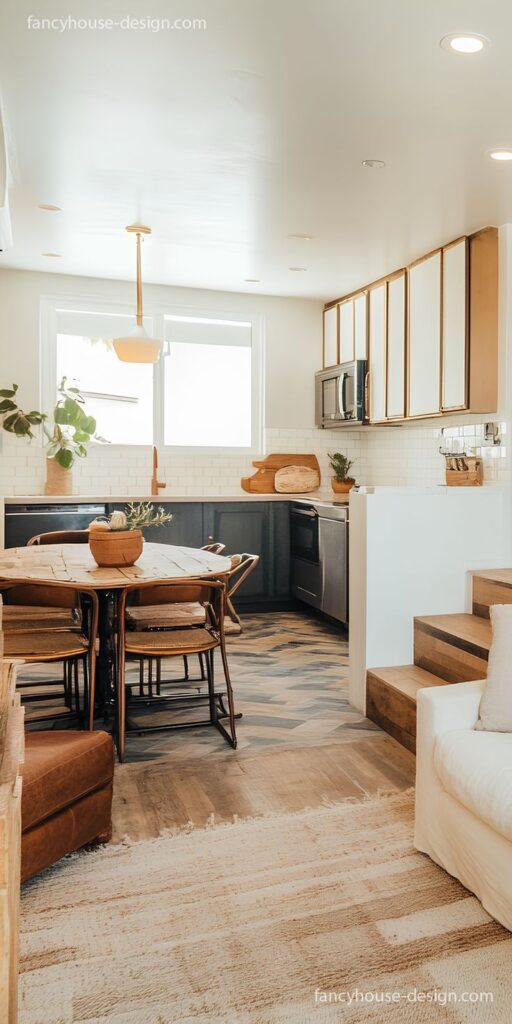
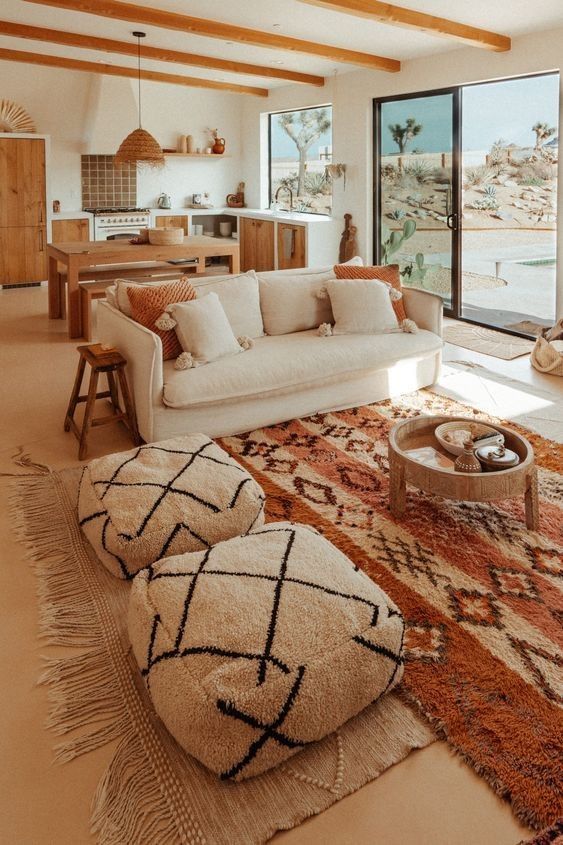
Natural elements play a key role in southwestern interior design. They create a connection to the outdoors and promote a sense of calm.
Materials Used:
- Stone: Incorporates texture and durability. Commonly used in flooring and walls.
- Wood: Adds warmth and character. Often found in beams and furniture.
- Earthy Colors: Shades of brown, tan, and rusty red reflect the surrounding landscape.
Plants are vital for bringing life into the space. They also improve air quality. Using native plants enhances the local feel.
Decorating Tips:
- Use large, bold pieces of furniture made from natural materials.
- Incorporate textiles like wool and cotton in warm colors.
- Display art that features landscapes or nature themes.
Lighting Choices:
Natural light is essential. Large windows and skylights help brighten spaces. Consider using pendant lights that resemble natural forms.
By focusing on these natural elements, southwestern interior design creates inviting and harmonious environments. The emphasis on materials and colors strengthens the connection to the landscape.
The Role of Textiles
Textiles play a crucial part in southwestern interior design. They add warmth, color, and texture to spaces. From rugs to upholstery, the right fabrics can enhance the overall aesthetic effectively.
Rugs and Weavings
Rugs and weavings are essential in southwestern design. They often feature bold colors and patterns that reflect the culture and landscape of the region.
Materials used include wool and cotton, which are durable and warm.
Common designs include geometric shapes, earthy tones, and motifs inspired by Native American art. These rugs can serve as focal points in a room or layer to create depth.
Placing a large area rug in a living room can tie furniture together. Smaller rugs can define spaces and add comfort underfoot.
Upholstery and Throws
Upholstery and throws also contribute significantly to the southwestern style. They can bring in vibrant colors and textures that complement the overall theme.
Fabrics like leather, canvas, and woven textiles are popular choices for furniture.
Throws made from soft, cozy materials can be draped over couches or chairs, providing warmth and style.
Patterns such as southwestern motifs, stripes, and floral prints can enhance sofas and chairs.
These elements also allow for easy updates to the space without major renovations. Simple changes in textiles can refresh and revitalize a room instantly.
Lighting in Southwestern Design
Lighting plays a vital role in Southwestern design. It enhances the warm and inviting feel of the space. The right lighting can highlight textures and colors typically found in this style.
Natural Light
Large windows are common. They allow plenty of sunlight to fill the room. This creates a connection with the outdoor landscape.
Light Fixtures
Many fixtures reflect natural elements. For example, wrought iron or wood can be used. Lantern-style lights are popular, providing a rustic touch.
Warm Tones
Soft, warm light is preferred. It complements the earth tones common in Southwestern decor. This type of lighting creates a cozy atmosphere.
Layered Lighting
Using multiple light sources helps to create depth. A mix of overhead lights, floor lamps, and table lamps can do this. It balances the brightness throughout the space.
Outdoor Lighting
Outdoor spaces are equally important. String lights or rustic lanterns enhance patios and gardens. They create inviting areas for relaxation or entertainment.
Focus on Art
Lighting can also highlight artwork and features. Spotlights or sconces can draw attention to sculptures or wall art. This adds character and personality to the environment.
Southwestern design uses lighting not just for visibility but as a key design element. It contributes to the overall feel of warmth and comfort in the space.
Architectural Features
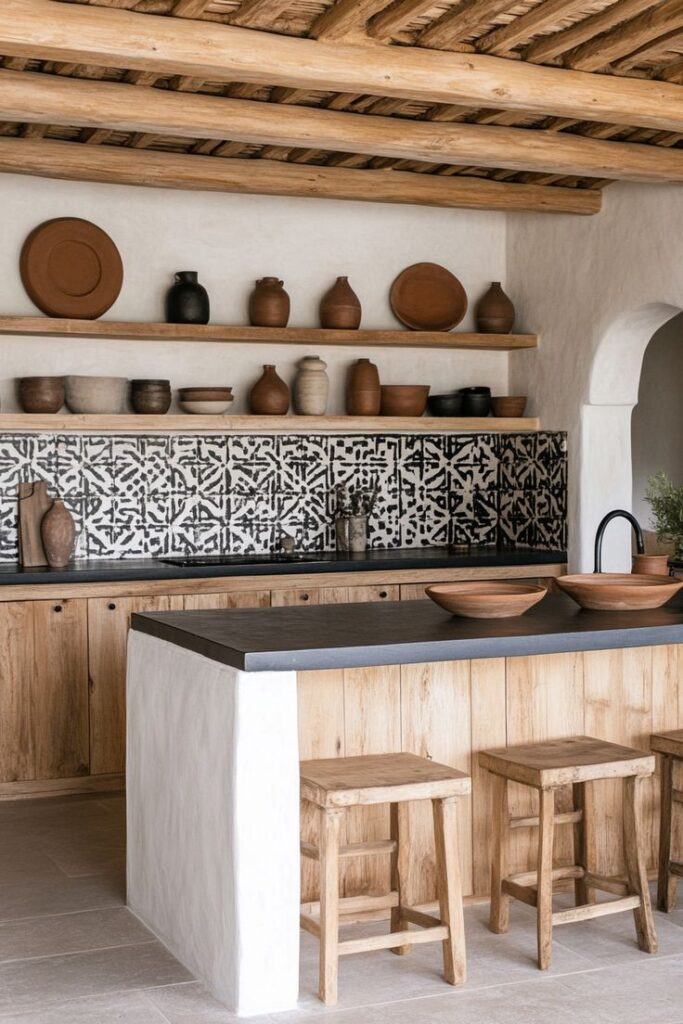
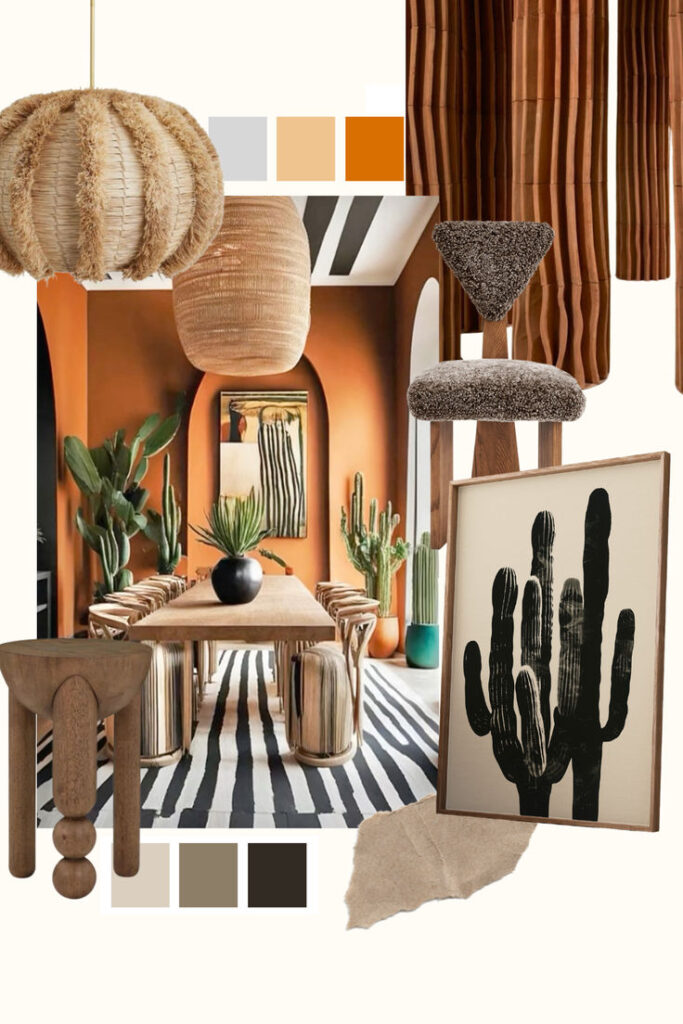
Southwestern interior design showcases unique architectural elements. Two defining features are Kiva fireplaces and the use of vigas and latillas. These elements add character and warmth to the space, reflecting the region’s rich history.
Kiva Fireplaces
Kiva fireplaces are traditional hearths used in many Southwestern homes. They are typically round or square and built with adobe or stucco. These fireplaces provide warmth and are often the focal point of a room.
Kiva fireplaces are designed with low profile openings. This design conserves heat and creates a cozy atmosphere. The distinctive look and function make them a popular choice in Southwestern architecture.
Many homeowners choose to decorate Kiva fireplaces with colorful tiles or native art, enhancing their aesthetic appeal. Their unique style connects modern spaces to the cultural heritage of the Southwest.
Vigas and Latillas
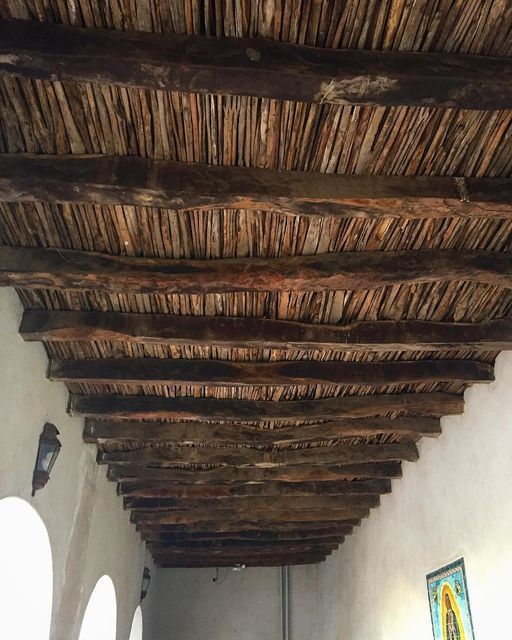
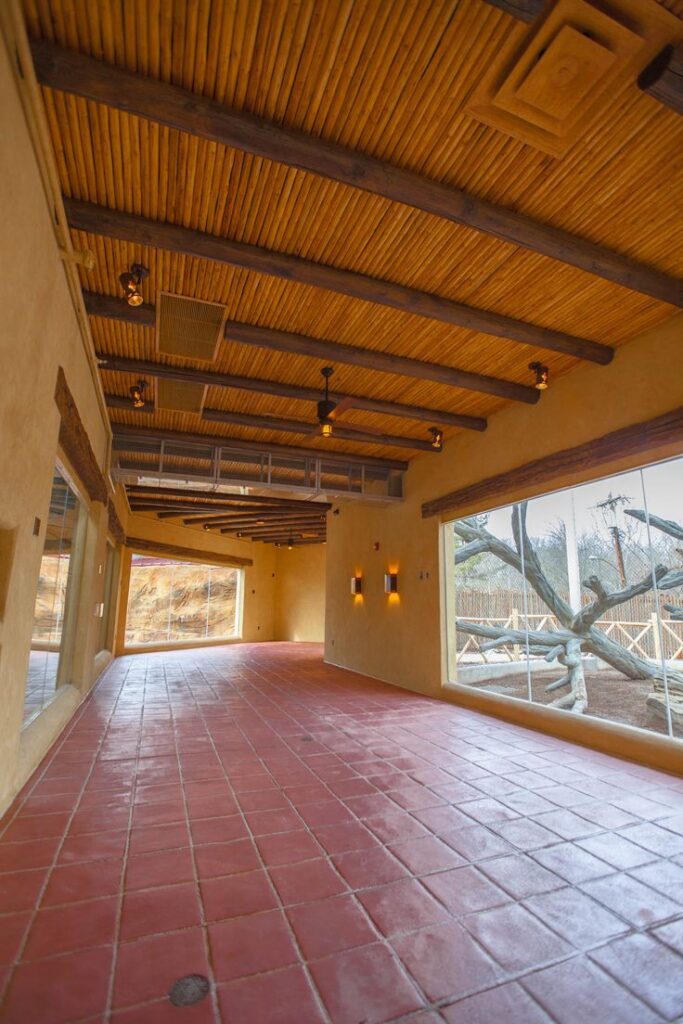
Vigas and latillas are crucial elements of Southwestern style ceilings. Vigas are large, wooden beams that support the roof, providing strength and character. They are often left exposed, showcasing natural wood textures.
Latillas are smaller branches placed between the vigas. These create a beautiful, rustic look. Together, they enhance the room’s height and create a distinct atmosphere.
Using native woods, like pine or cedar, is common for both vigas and latillas. This practice preserves local traditions and adds authenticity to the design. The combination of these features creates a warm, inviting environment typical of Southwestern interiors.
Landscaping for Southwestern Homes
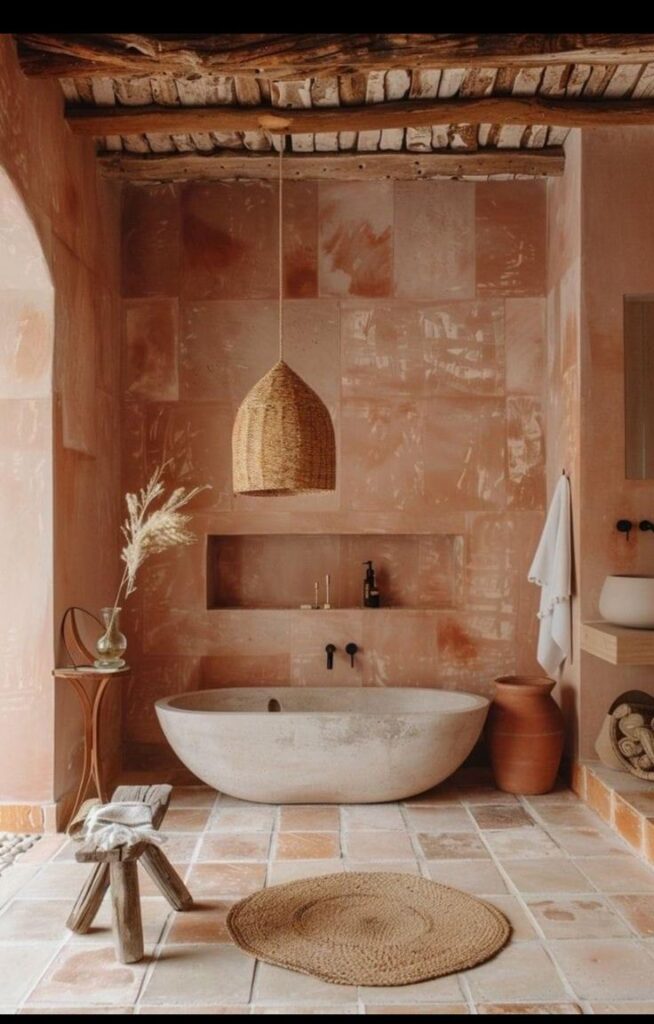
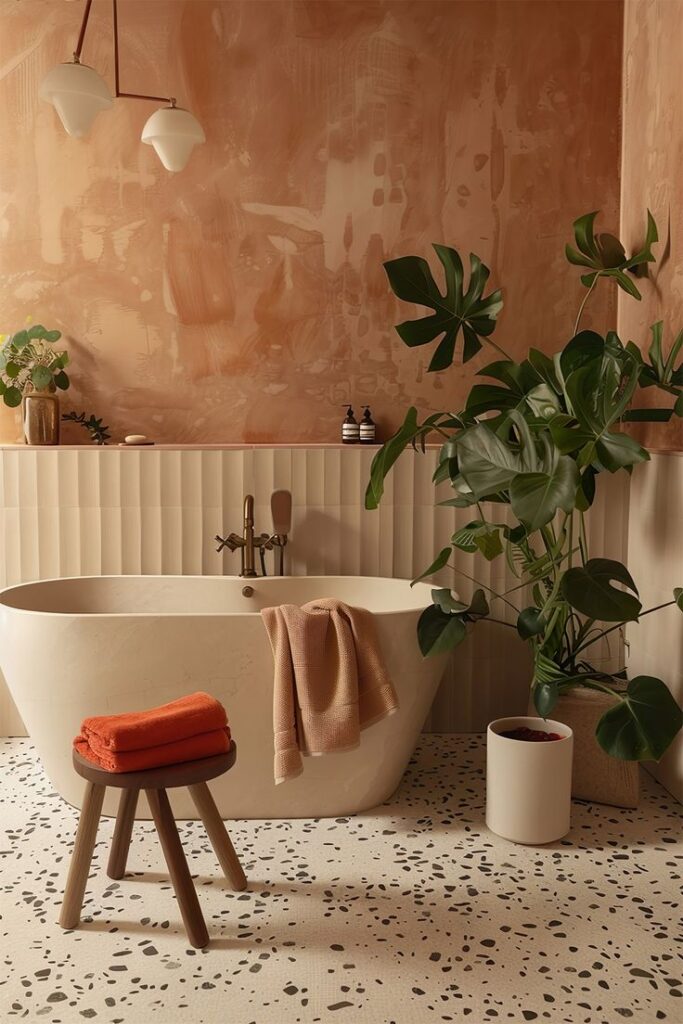
Landscaping for Southwestern homes focuses on using plants and materials that thrive in dry climates. This style respects the local environment and enhances the natural beauty of the area.
Common Features:
- Drought-Resistant Plants: Cacti, succulents, and native shrubs are popular choices. They require less water and maintenance.
- Natural Stone: Paths and patios often use stone for a rustic look. Flagstone and saplings add to the authentic style.
- Colorful Accents: Bright flowers, such as desert marigold or red yucca, provide color against the earthy tones of the landscape.
Design Tips:
- Create Zones: Different areas can serve various purposes. Include seating areas, gardens, and pathways for easy movement.
- Use Gravel: Instead of grass, gravel can cover areas that need low maintenance. It also provides good drainage.
- Incorporate Natural Elements: Boulders and logs can serve as decorative features. This ties the home to the surrounding environment.
Water Conservation:
- Drip Irrigation: This technique delivers water directly to the roots of plants. It helps save water in dry conditions.
- Rain Gardens: These gardens collect rainwater and allow plants to absorb it slowly. They are effective in managing water runoff.
With thoughtful planning, Southwestern landscaping can be both beautiful and functional.
Maintaining Authenticity
Maintaining authenticity in southwestern interior design involves honoring the cultural roots and traditions of the style. Each element should reflect the history and artistry of the region.
Key Elements to Consider:
Materials: Use natural materials like clay, wood, and stone. These reflect the landscape and traditional building techniques.
Color Palette: Choose earthy tones like terracotta, warm browns, and vibrant reds. These colors evoke the natural environment.
Textures: Incorporate various textures. Woven textiles, pottery, and leather add depth and richness.
Furniture Selection:
Opt for handcrafted furniture. Pieces made by local artisans carry a unique story and quality.
- Avoid mass-produced items.
- Look for designs that reflect traditional craftsmanship.
Art and Decor:
Include artwork that showcases local culture. This could be pottery, textiles, or paintings inspired by southwestern themes.
- Use plants native to the area.
- Incorporate items like woven baskets and rugs to enhance authenticity.
Staying true to the essence of southwestern design means appreciating its roots. Each choice should reflect a respect for the history and culture that shapes this style.
Frequently Asked Questions
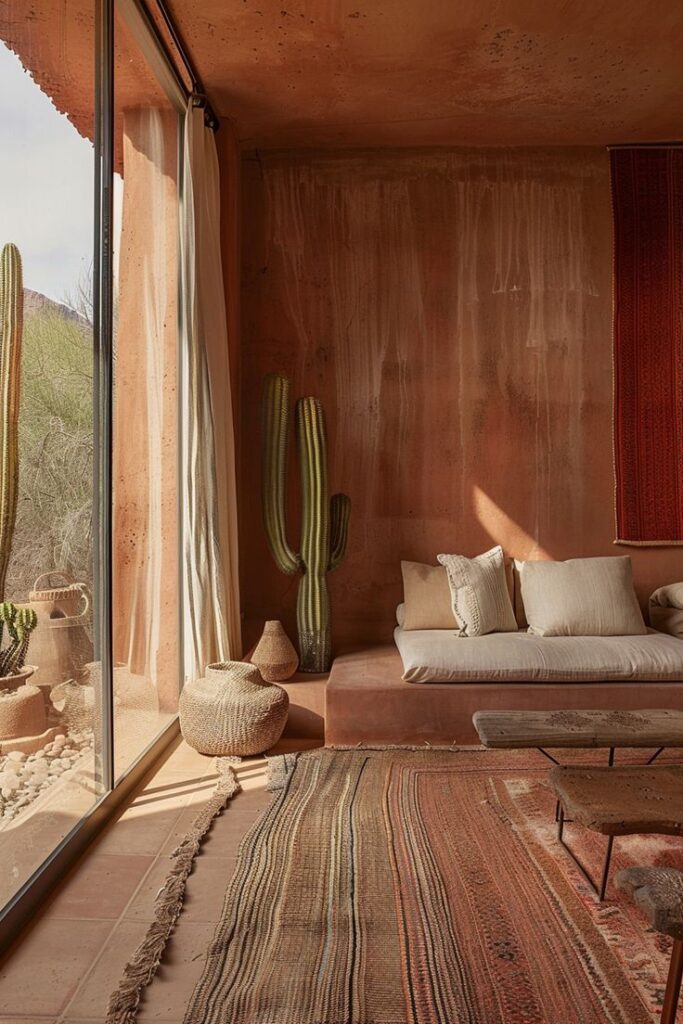
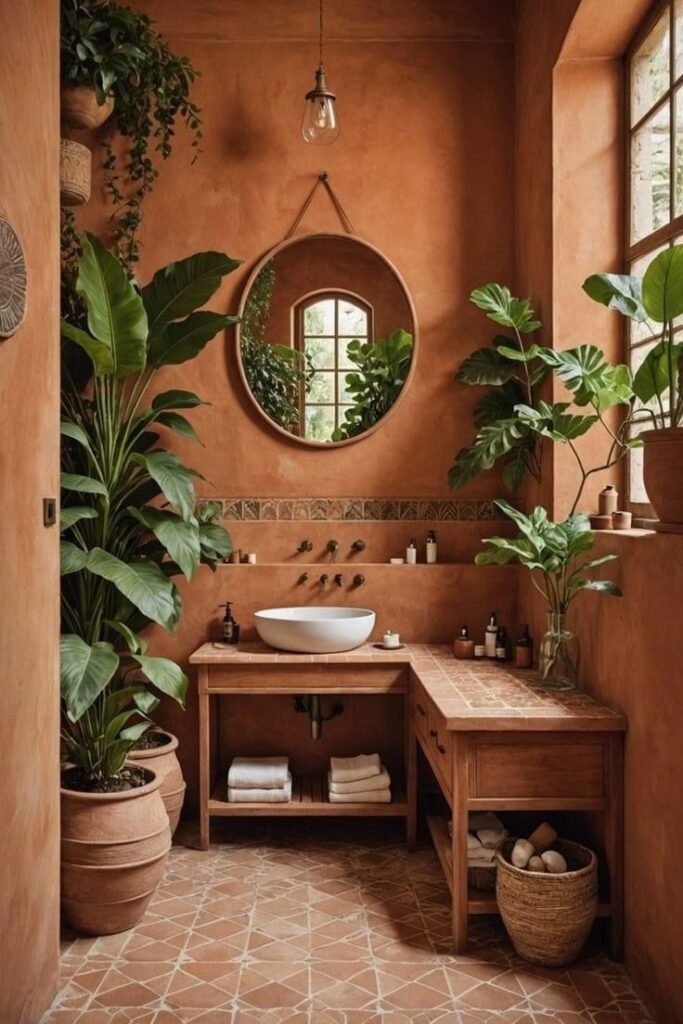
This section covers common inquiries about Southwestern interior design. It presents defining features, modern updates, decorating ideas for different rooms, and unique elements such as patterns and color schemes.
What are the defining elements of Southwestern interior design?
Southwestern interior design often includes earthy tones, rustic materials, and handcrafted items. Key elements are terracotta tiles, adobe walls, and wood beams. Decorations may showcase Native American art and textiles.
How can one incorporate modern features into Southwestern interior design?
To blend modern features with Southwestern style, use sleek furniture and clean lines. Choose contemporary art and minimalistic décor. Combining these with traditional elements can create a fresh look.
What are some bedroom decorating ideas that embody a Southwestern aesthetic?
A Southwestern bedroom can feature a wooden bed frame with colorful bedding. Add Native American-inspired throw pillows and handwoven blankets. Earthy wall colors and natural wood accents enhance the rustic feel.
Can you provide some tips for creating a Southwestern themed living room?
For a Southwestern living room, start with a color palette of warm earth tones. Include comfortable seating, like leather sofas, and accent with woven rugs. Display pottery and tribal art for authenticity.
What patterns are commonly associated with Southwest design?
Common patterns in Southwestern design include geometric motifs and tribal prints. These designs often appear in textiles, rugs, and wall art. They can add visual interest and depth to spaces.
How do Southwestern color schemes differ from regular color palettes?
Southwestern color schemes focus on warm, earthy tones like terracotta, sage green, and sandy beige. These colors reflect the natural landscape. They create a cozy, inviting atmosphere compared to cooler, more neutral palettes.
- 55shares
- Facebook0
- Pinterest55
- Twitter0
